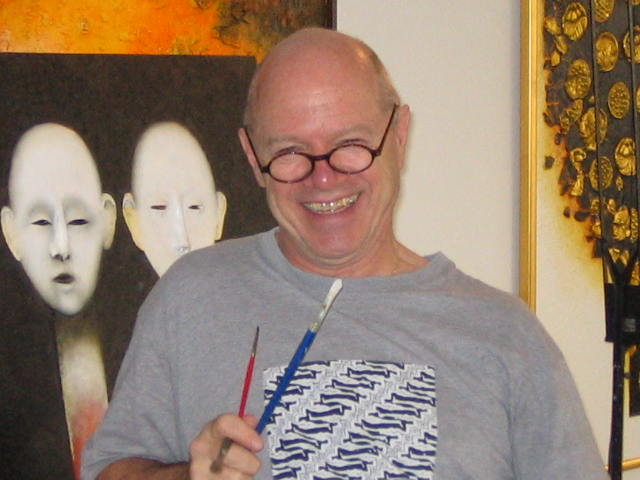ABOUT THE ARTIST
Bio – Gerd Koidl
Born in Austria, Koidl is most closely aligned with the Fantastic Realists, a Viennese school of artists, which rose to recognition during the middle 1940s. Gerd Koidl’s mentor is the artist’s first tutor, Professor Diepold, one of Austria’s leading sculptures.
Considered “an intellectual man’s art”, the artworks of Austrian artist Gerd Koidl will draw you in for further study; it will force questions of how, why and when surrounding his intricate, painstaking and complex artwork.
Koidl’s canvasses are a marriage of sculpture and painting resulting in a startling, eye catching relief. A Buddha motif is repeated through many of his artwork, including Asian-influenced portraits and intricately designed paintings of Japanese masks and kimonos. In his series “Buddha Fields”, each Buddha imprint was created by hand and fit into the art with precision and depth of creativity.
Gerd Koidl’s first one-man exhibition took place in Frankfurt in 1972; critical acclaim has followed in subsequent shows around the world, including Austria, Hong Kong, Japan, USA and Australia.

Works of art with a purpose
Koidl explains that the purpose of his artworks is to present a message derived from experiences and impressions made during his travels in Asia, Japan and Australia. His paintings suggest a concern for the spoiling of the natural world and its effect on the well-being of humans and other species.

Artist’s style
Koidl has developed his own way of making reliefs, using materials such as clay and plaster with aluminium foil, cast paper, gold leaf and other substances built-up on a wood or canvas base, then modelled, engraved and painted. Gold, yellow, red and bronze are common tones with splashes of cobalt blue and dash of red on individual works such as Tree of Wisdom and Ocean of Wisdom. Most paintings are square in shape and measure over a metre in diameter.
Many of Koidl’s recent works feature repetitive Buddhas, an emblem of Eastern society, which the artist describes as a symbol he uses to express faith, devotion, peace of mind, and inner peace. The repetition feels as though the Buddhas images are stretching out in concentric circles in all directions, including toward the viewer. Koidl’s unconventional portraits, such as Buddha and Reincarnation hold the viewer entranced. The image remains firmly locked in the viewers’ minds long after the painting is out of sight. Of his Buddha Fields, as Koidl refers to them, he states that he often uses spiritual symbols in his art as background or focus point. He sees the spiritual symbol, such as the Buddha, as a door or a window to open up as entry points into another level of reality.
In contrast, his Kimono series evokes a soothing feeling of modern day old Japanese customs. Architectural in design, the Eightfold Path, features small bronze-coloured Buddhas on a square map-like rendering on a round canvas. His paintings are equally satisfying on their own as they are collectively.